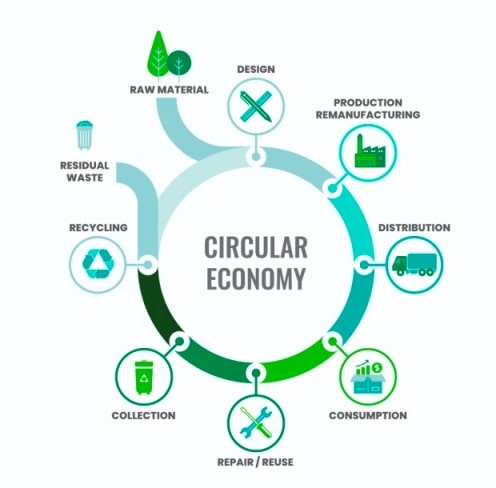Navigating the Circular Economy: Transforming Business Practices for Sustainability

Introduction: Embracing Circular Economy Principles
The shift towards a circular economy represents a fundamental departure from traditional linear models of production and consumption. By prioritizing waste reduction and resource optimization, businesses can play a pivotal role in addressing pressing environmental challenges while unlocking economic opportunities.
1. Understanding the Circular Economy Concept
– Exploring the principles of the circular economy, including waste minimization, resource recovery, and product longevity.
– Contrasting the linear and circular economic models to highlight the benefits of transitioning towards circularity.
– Illustrating the significance of “closing the loop” through innovative design, product stewardship, and closed-loop manufacturing processes.
2. Environmental Imperatives and Economic Opportunities
– Discussing the urgent need to address environmental concerns such as climate change, pollution, and resource depletion.
– Highlighting the economic benefits of embracing circular practices, including cost savings, operational efficiency, and revenue diversification.
– Showcasing successful case studies of companies that have implemented circular business models to drive sustainability and profitability.
3. Challenges and Barriers to Adoption
– Identifying key challenges and barriers faced by businesses in transitioning to a circular economy, such as mindset shifts, organizational culture, and upfront investments.
– Discussing logistical hurdles related to supply chain complexities, traceability of recycled materials, and quality assurance.
– Emphasizing the importance of collaboration, policy support, and stakeholder engagement in overcoming these challenges.
4. Collaboration and Partnerships for Change
– Exploring the role of governments, industry associations, and non-profit organizations in providing policy support, financial incentives, and technical assistance.
– Advocating for cross-sectoral collaboration to foster knowledge exchange, innovation, and collective action towards sustainability goals.
– Highlighting the significance of education and awareness-raising efforts in driving widespread adoption of circular practices among stakeholders.
5. Innovation and Future Outlook
– Examining the role of research and development in developing eco-friendly materials, technologies, and business models.
– Exploring emerging trends and innovations in the circular economy landscape, such as product-as-a-service models, sharing economies, and digital platforms.
– Speculating on the future trajectory of the circular economy and its potential to reshape industries, economies, and societies for the better.
Conclusion: Embracing a Circular Future
In conclusion, the transition to a circular economy offers immense promise for businesses seeking to reconcile economic growth with environmental stewardship. By reimagining their operations, products, and value chains through a circular lens, companies can unlock new sources of value, enhance resilience, and contribute to a more sustainable future. While challenges persist, concerted efforts and collaboration across sectors can accelerate the adoption of circular practices, paving the way for a regenerative economy that benefits both people and the planet.
